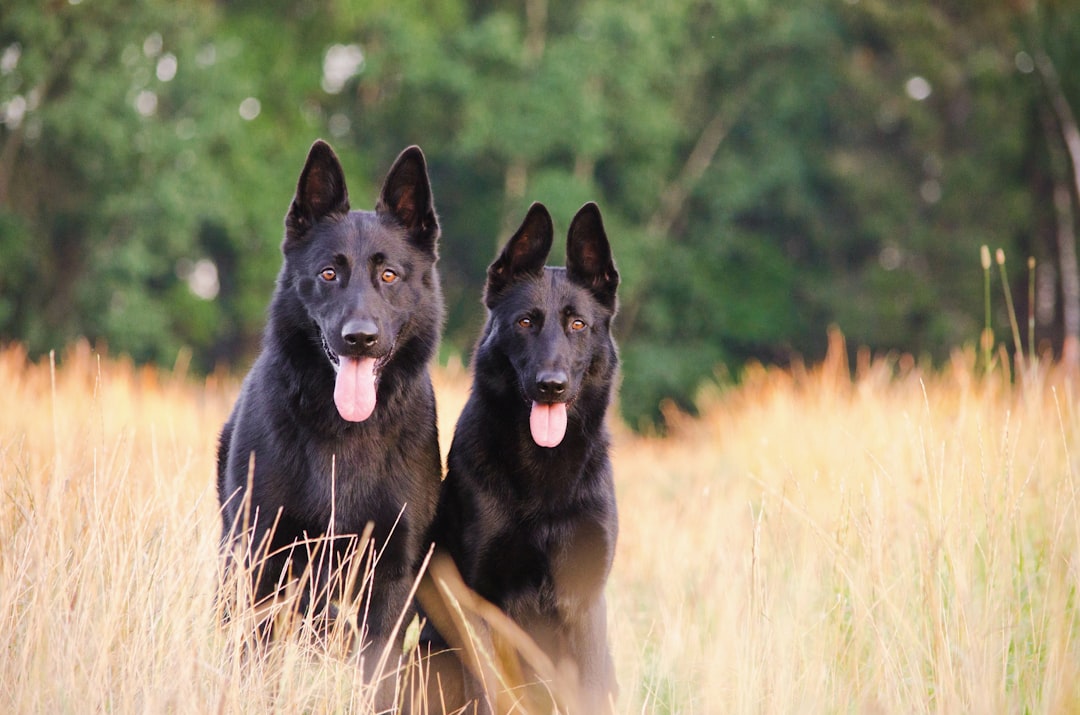If you think only humans have to worry about melanoma, think again! Melanoma in dogs is a serious concern that can sneak up on our furry friends. These pesky skin tumors don’t just pop out of nowhere; they often come accompanied by a range of signs that could leave any paw-rent in a tailspin. So, whether you’re a dog lover or just a curious bystander, understanding the risks and treatments associated with this condition is crucial. Let’s dive into the bark-tastic world of canine melanoma and discover how to keep our pooches safe and sound!
What is Melanoma in Dogs?

Melanoma in dogs is not a dish you can order at a fancy restaurant; however, it’s something that pet owners should definitely be aware of! Simply put, melanoma refers to a type of skin cancer that originates from melanocytes—those little pigment cells responsible for your dog’s fur color.
This cancer can manifest in various forms, but here’s the scoop:
- Cutaneous Melanoma: This type arises on the skin, often noticeable as pigmented lumps or nodules.
- Oral Melanoma: Now, this is the sneaky one, showing up in your dog’s mouth and potentially leading to trouble when it comes to eating.
- Aural Melanoma: Sometimes, melanoma can sneakily appear in the ears, causing discomfort and signaling the need for attention.
Key Facts:
- Common in Breeds: Certain breeds like Scottish Terriers and Dachshunds are more prone to melanoma in dogs.
- Aggressiveness: While some melanomas are less aggressive, oral melanoma tends to be one of the more menacing forms.
Remember, spotting the signs early can make a significant difference in treatment success! 🐾
Common Signs and Symptoms of Canine Melanoma

Identifying melanoma in dogs early can be a lifesaver! Here are some telltale signs to watch for:
- Lumps and Bumps: Look for abnormal growths on your dog’s skin or mouth that seem out of place.
- Color Changes: Dark spots or changes in color on existing moles might raise eyebrows (or ears!).
- Swelling: Pay attention to any swelling around the face, especially near the gums and snout.
- Bleeding: Unexplained bleeding or oozing sores that don’t heal can signal trouble.
- Pain or Discomfort: If your pup seems more grumpy than usual, it might be time to see the vet.
Here’s a quick comparison table to highlight symptoms based on type:
| Type of Melanoma | Common Symptoms |
|---|---|
| Cutaneous | Lumps in skin, color changes, itching |
| Oral | Difficulty eating, bad breath, bleeding gums |
| Ocular | Watery discharge, changes in vision |
If you notice any of these symptoms, don’t delay! Swift action is key when it comes to melanoma in dogs. Remember, better safe than sorry!
Understanding the Different Types of Melanoma in Dogs

When it comes to Melanoma in Dogs, knowledge truly is power. Knowing the different types can provide valuable insight into potential treatments and prognosis. Here’s a breakdown:
| Type of Melanoma | Location | Risk Level |
|---|---|---|
| Cutaneous Melanoma | Skin (frequently seen in areas with fur) | Low to Moderate |
| Oral Melanoma | Mouth (gums, lips, tongue) | High |
| Acral Melanoma | Paws and foot pads | Moderate to High |
- Cutaneous Melanoma: This is the most common type and often appears as a lump on the skin. Thankfully, it usually has a favorable outcome if caught early.
- Oral Melanoma: Ah, the sneaky one! This type tends to be aggressive and requires immediate attention, as it poses a higher risk of metastasis.
- Acral Melanoma: Found primarily on the paws, this type can be elusive, often hiding between the pads. It typically needs specialized care.
Understanding these types can help dog owners identify signs early, paving the way for better outcomes in cases of Melanoma in Dogs. Keep your furry friends healthy—this knowledge might just save their lives!
Risk Factors Associated with Melanoma in Dogs
When it comes to Melanoma in Dogs, not all pups are created equal. Some dogs are more prone to this pesky condition than others. Let’s dive into the risk factors that may put your furry friend in the melanoma crosshairs:
- Breed: Certain breeds are more susceptible. Look out for:
- Scottish Terriers
- Golden Retrievers
- Rottweilers
- Age: Like humans, dogs grow older, and with age comes increased risk. Most cases pop up in dogs over 10 years old.
- Skin Color: Believe it or not, darker-furred dogs are less likely to develop melanoma. Light-colored and spotted dogs might want to keep an eye on their skin!
- UV Exposure: Sunscreen isn’t just for beach days! Dogs with sparse fur or light skin can suffer higher risks from the sun’s rays.
By keeping these factors in mind, you can better safeguard against melanoma in dogs. Remember, knowledge is power, and early detection makes all the difference!
Diagnosis: How Veterinarians Identify Melanoma in Dogs
Diagnosing melanoma in dogs isn’t like flipping a coin; it requires a keen eye and a bit of detective work. Veterinarians follow a systematic approach to ensure that your furry friend gets the right diagnosis. Here’s what they typically do:
- Physical Examination: Initially, vets conduct a thorough check-up to spot any unusual lumps or skin changes.
- Biopsy: If suspicious growths appear, they perform a biopsy, taking a small sample to analyze. This is like sending it to the lab for a “make-or-break” verdict on whether it’s melanoma in dogs.
- Staging: If melanoma is diagnosed, staging involves determining how far it has spread. This may include imaging tests like X-rays or ultrasounds.
Comparative Table: Diagnosis Methods
| Method | Purpose | Duration |
|---|---|---|
| Physical Exam | Spot visible abnormalities | Immediate |
| Biopsy | Confirm malignancy | 1-7 days |
| Staging | Assess spread and severity | 1 day to several days |
Ultimately, an early diagnosis significantly impacts treatment outcomes. So, if you spot something suspicious, don’t wait; call your vet. Timely action against melanoma in dogs can be a game-changer!
Treatment Options for Melanoma in Dogs
When it comes to tackling Melanoma in Dogs, knowing the treatment options can make a world of difference. Thankfully, pet parents have several choices to consider:
- Surgery: This is often the first line of defense. Removing the tumor can help curb the spread of melanoma and improve your dog’s quality of life.
- Radiation Therapy: If surgery isn’t viable, radiation therapy can shrink tumors and reduce discomfort. Think of it as your dog’s superhero sidekick!
- Chemotherapy: While not always effective for melanoma in dogs, it’s still an option, especially for those cases that are aggressive or widespread.
- Immunotherapy: This cutting-edge approach helps strengthen your dog’s immune system to fight the cancer. Talk about a natural bodyguard!
Here’s a quick overview of the treatments:
| Treatment Type | Effectiveness | Timing |
|---|---|---|
| Surgery | Highly effective | Early-stage melanoma |
| Radiation Therapy | Moderately effective | Post-surgery or for non-surgical candidates |
| Chemotherapy | Varies | Often in conjunction with other treatments |
| Immunotherapy | Promising | In specific cases based on individual response |
Remember, early intervention is key! The sooner you seek treatment for melanoma in dogs, the better the outcome. Always consult your veterinarian for the best action plan tailored to your furry friend.
Prevention and Early Detection Strategies
When it comes to battling Melanoma in Dogs, an ounce of prevention is worth a pound of cure. Here are some strategic moves you can make to help your furry friend stay healthy and catch any potential issues early:
- Regular Vet Visits: Schedule check-ups at least once a year (or more frequently for older dogs). Your vet knows the warning signs of melanoma in dogs better than your dog knows who the mailman is!
- Home Inspections: Regularly check your dog for any unusual lumps, bumps, or changes in their skin color. Think of it as a daily grooming ritual—only you’re on a mission to spy melanoma!
- Sun Protection: Limit sun exposure, especially for dogs with light-colored fur or those with a history of skin issues. Use dog-safe sunscreen or provide shade when outdoors.
- Healthy Diet: Feed your pup a balanced diet rich in antioxidants to boost their immune system. A happy, healthy pup is better equipped to fight off issues, including melanoma in dogs.
By staying vigilant and proactive, you can help keep your canine companion safe from the sneaky paws of melanoma!
The Importance of Regular Vet Check-ups
When it comes to Melanoma in Dogs, prevention is much better than a tricky treatment. Regular vet check-ups act like a magic shield – keeping potential dangers at bay. Here’s why extending your pup’s spa day at the vet makes sense:
- Early Detection: The sooner you spot any suspicious growths, the better. Catching melanoma in its infancy can make all the difference.
- Customized Care: Vets know your dog’s history and can offer tailored advice and screenings that fit your dog’s specific needs.
- Stay Informed: Regular visits allow your vet to educate you about signs of Melanoma in Dogs. Knowledge is power!
Veterinarian Visits: A Quick Comparison
| Frequency of Visits | Benefits |
|---|---|
| Every 6 months | Basic health checks, vaccination updates, early issue detection |
| Annually | In-depth examinations, specialized tests for early signs of melanoma |
| As needed | Address specific concerns, potential emergencies |
Don’t skip those vet appointments! Consistency can lead to catching issues like melanoma before they escalate, ensuring your furry friend stays happy and healthy. After all, who wouldn’t want a guilt-free, tail-wagging companion for years to come?
Frequently Asked Questions
What is melanoma in dogs, and how does it differ from human melanoma?
Melanoma in dogs is a type of cancer that affects the melanin-producing cells. While both dogs and humans can develop this condition, the canine version often appears as a pigmented or non-pigmented lump on the skin or in the mouth. Unlike human melanoma, which can be aggressively harmful and metastasize quickly, canine melanoma may have varied behaviors, but it can still pose serious risks, especially if diagnosed late. Think of it like comparing apples to, well, dog apples – similar but highly unique!
What are the common signs of melanoma in dogs that pet owners should look out for?
Pet owners, keep your eyes peeled! Common signs of melanoma in dogs include unusual lumps or bumps on the skin, especially around the mouth or eyes, changes in pigmentation, and persistent sores that just won’t heal. If Fido suddenly has a penchant for hiding his face or if his meal becomes a game of ‘guess the chew’, it may be time to get that tail wagging to the vet for a check-up!
How is melanoma diagnosed in dogs?
Diagnosing melanoma in dogs typically involves a physical exam followed by a biopsy of the suspicious lump. Your vet may also recommend imaging tests like X-rays or ultrasound to check for any dastardly metastases. It’s essentially the vet’s version of a detective novel – they collect clues, analyze the evidence, and hopefully solve the mystery of your pup’s health before it gets too intense!
What treatments are available for dogs diagnosed with melanoma?
Treatments for canine melanoma vary depending on the severity and location of the tumor. Options range from surgical removal of the tumor – think of it as a doggie haircut gone medical – to chemotherapy and radiation therapy. Your veterinarian will help you navigate the options, ensuring your furry friend receives the best care possible. Remember, every pup is different, so treatment plans should suit the unique fluffy individual resting on your lap!



